11 February 2012
A campus underlain by porphyritic andesite
Posted by Callan Bentley
The campus of the University of Texas at El Paso is a beautiful place. You can look south into Mexico, a scant half mile away. It’s got rocky hills rising up between buildings and between stadiums (stadia?), and a utterly unique campus architecture based on the Himalayan nation of Bhutan. Here’s a look at the rocks beneath the university…
The main rock type is a porphyritic andesite – probably a hypabyssal (shallow) intrusion. It’s got phenocrysts of feldspar and hornblende in great profusion:
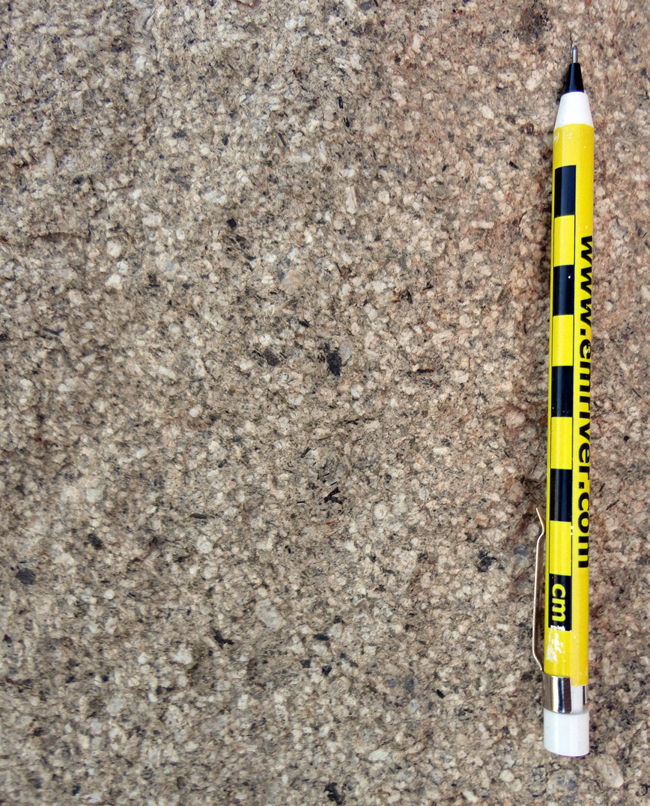
According to Josh Villalobos of El Paso Community College (and a graduate of UTEP), it’s 47 million years old (Eocene), a shallow pluton related to the subduction of the Farallon Plate. Guess what it’s called? That’s right, the Campus Andesite. It’s not limited just to the UTEP campus, but is found in several intrusive masses throughout the region.
I spotted a couple of xenoliths “floating” in this wad of (former) magma. Here’s the bigger of the two:
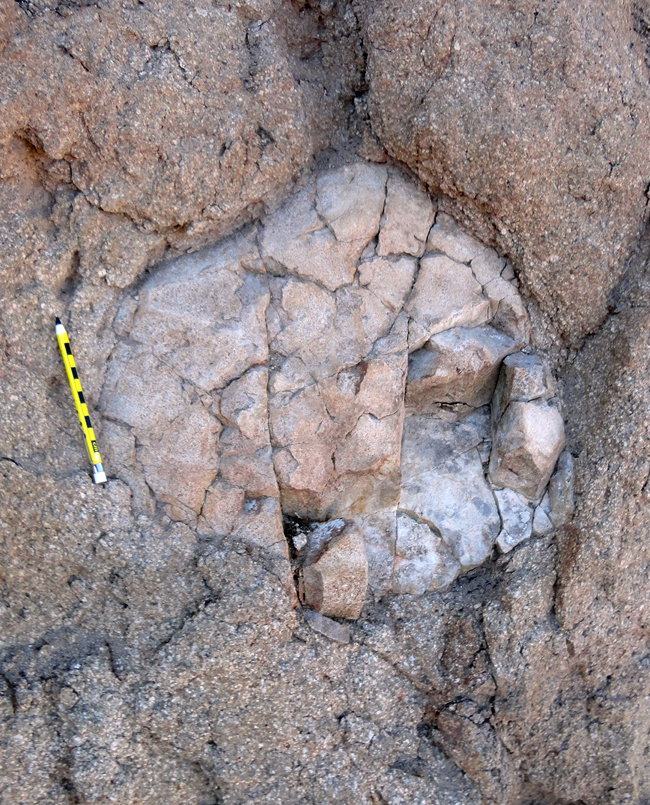
The andesite is cross cut by several joint sets, including some that are mineralized into veins:
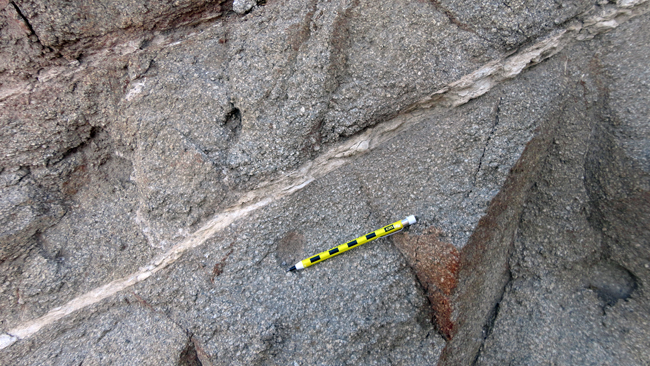
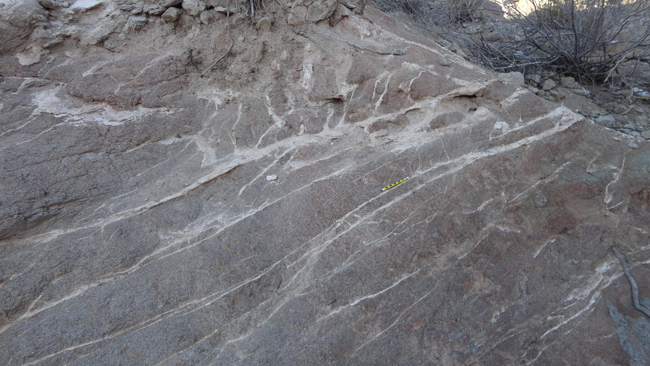
Whether or not there are white veins sealing these fractures shut, you can see the influence of the joints on fluid flow, since there is rusty staining of the andesite immediately adjacent to the fractures, but not so further away from the cracks, where the andesite remains an undisturbed gray in color:
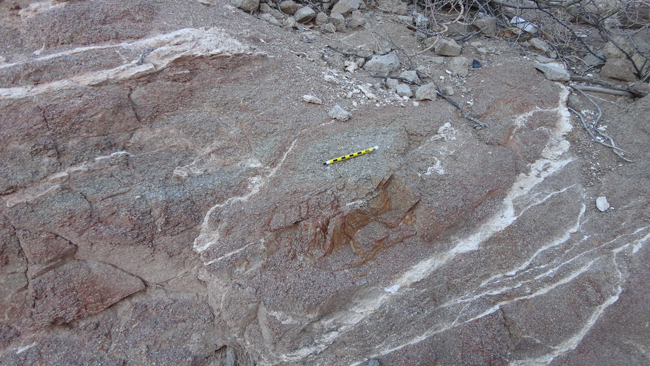
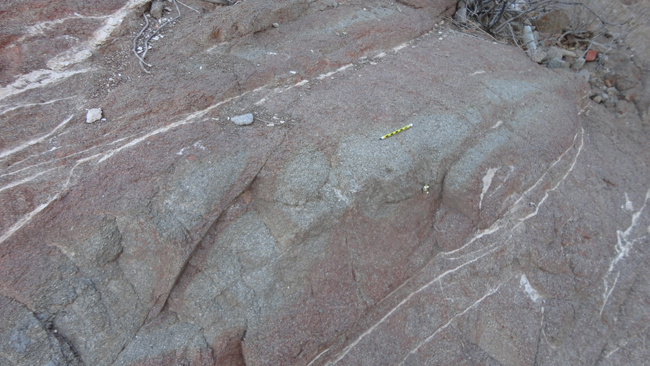
Pretty good stuff. I wish we had outcrops on campus at NOVA.


 Callan Bentley is Associate Professor of Geology at Piedmont Virginia Community College in Charlottesville, Virginia. He is a Fellow of the Geological Society of America. For his work on this blog, the National Association of Geoscience Teachers recognized him with the James Shea Award. He has also won the Outstanding Faculty Award from the State Council on Higher Education in Virginia, and the Biggs Award for Excellence in Geoscience Teaching from the Geoscience Education Division of the Geological Society of America. In previous years, Callan served as a contributing editor at EARTH magazine, President of the Geological Society of Washington and President the Geo2YC division of NAGT.
Callan Bentley is Associate Professor of Geology at Piedmont Virginia Community College in Charlottesville, Virginia. He is a Fellow of the Geological Society of America. For his work on this blog, the National Association of Geoscience Teachers recognized him with the James Shea Award. He has also won the Outstanding Faculty Award from the State Council on Higher Education in Virginia, and the Biggs Award for Excellence in Geoscience Teaching from the Geoscience Education Division of the Geological Society of America. In previous years, Callan served as a contributing editor at EARTH magazine, President of the Geological Society of Washington and President the Geo2YC division of NAGT.
[…] saw on the post-InTeGrate field trip to the rocks of El Paso, Texas, was this contact between the aforementioned Campus Andesite, and the Cretaceous sedimentary rocks into which it intruded (contact metamorphosed in the area of […]
[…] sill is likely to be of Eocene age, same as the Campus Andesite and the Cristo Rey laccolith beyond that. When it was dated, using the K/Ar method, it yielded a […]